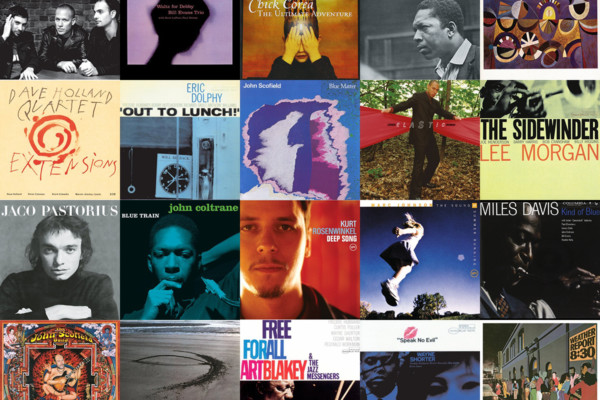The Lightbulb Moment: Compare And Contrast

It is a lifelong goal of mine to understand the subtleties of music — the sound of records coming from particular eras and locals, the specific timbre of different instruments, and the nuances that reflect the personality of every player. There’s no better way to hone in these subtleties than by comparing and contrasting songs and catalogs that are of the same genre. Like apples and oranges, it’s easier to identify the differences between two pieces of fruit… comparing apples and tortilla chips wouldn’t do you much good. Similarly, you can learn a lot about music by listening to a playlist of Rush, Sam Cooke, Jewel, and Tito Puente, but the nuance may be harder to come by.
As a novice in the world of metal, I decided it was time to explore my musical horizons by applying this compare and contrast learning method. Lucky for me, I have a significant other who grew up with battle scars from mosh pits and a closet full of demonic looking concert tees. My introductory lesson was a crash course in Megadeth and Metallica. Thanks to an eclectic mix CD and a long car ride, I was able to listen to the bands back to back, hoping to properly identify the Dave Mustaine licks versus the Kirk Hammett solos. I quickly got the hang of it and began to pinpoint the dead giveaways: kick drum sounds and growling vocals. Over the course of an hour, I went from being vaguely familiar with an overall genre to observing the characteristic musical elements that differentiate one band from another. While this may seem like a small step on the road to becoming a metal fan, I listened with fresher and far more educated ears than I had ever done before.
A few general principles guided this process of “active listening.” First off: vocals. While this may be obvious, a singer’s instrument is so unique and personal that it is often the most identifiable musical element. The more you listen to a band or vocalist, the more you’ll recognize their phrasing, the specific characteristics of their voice, and how they interpret a song. If you’re comparing groups of vocalists, such as The Temptations and The Four Tops, then listen hard for their vocal blend or to the singers that are most likely to take the lead.
Second: pocket and rhythm. With most bands, the drummer sets the stage for how hard they rock, how deep they groove, and how supportive they are of the song writing. They lay the foundation that everyone else adheres to and may have a few trademarks when it comes to tone, fills, and movement around the kit. Whether you’re listening to Lars Ulrich and Nick Menza or to Benny Benjamin and Al Jackson Jr., the drummer will often dictate the overall tone of the band. After all, they’re usually the first ones to set up at a session or sound check — that’s not a coincidence.
Third: the core instrumentalists (guitar, bass, keys, etc.) If something jumps out at you, such as a guitar solo or a particularly groovy bass line, then make a mental note of it. Maybe the soloist is using plenty of technical tricks, such as tapping, sweep arpeggios, or extreme speed. Or perhaps they’ve got a clean sound and play a simple melodic solo that you can easily sing along to. As you’re listening to the bass player, listen to how they play (finger style, pick, slap) and if they throw in busy fills, stick to the meat and potatoes, or pick a key moment or two in the song to execute an impressive line.
And lastly, listen to the overall sound of the recording. Does it sound like it was recorded in the 1940s? 60s? 90s? Present day? Is it dark, muddy, or analog sounding? Does it sound crystal clear and perhaps auto-tuned? Each one of these questions helps you get closer to when and where something was recorded. You may be able to recognize the stamp of a producer, such as the Phil Spector “wall of sound” or the deliciously pop-driven Max Martin. The more you know about the recording process and the better you are at identifying the sound of producers, studios, or record companies, the more interesting nuggets you’ll find in the music.
These are just a few of the guidelines that you can use to compare and contrast recordings… trust me, there are plenty more. The best thing you can do is to listen with intention, ask yourself specific questions about what you’re hearing in the music, and listen to examples side-by-side so that you can clearly hear the similarities and differences. Whether you’re trying to learn about a new genre, recognize music from a particular time period, or zone in on the style of a particular artist or player, exercise your ability to listen. Soon, the apples and oranges will be obvious and you’ll be able to pinpoint the Galas, Fuji, Jonathans, and Jonagolds.
Ryan Madora is a professional bass player, author, and educator living in Nashville, TN. In addition to touring and session work, she teaches private lessons and masterclasses to students of all levels. Visit her website to learn more!



